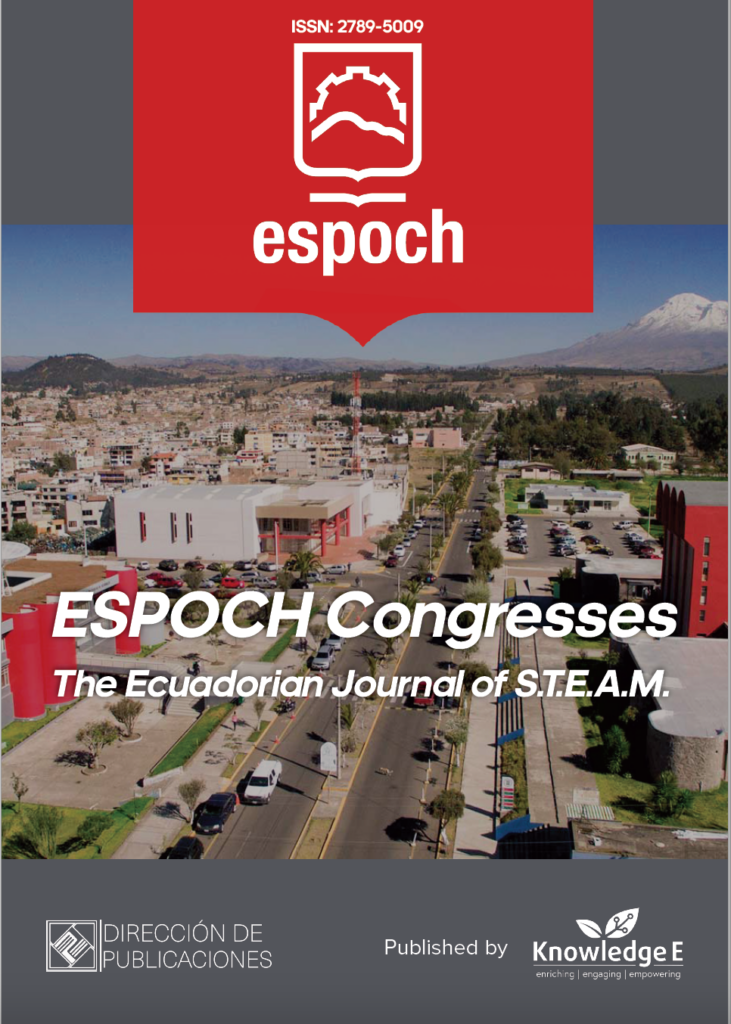
ESPOCH Congresses: The Ecuadorian Journal of S.T.E.A.M.
ISSN: 2789-5009
Leading Ecuadorian research in science, technology, engineering, arts, and mathematics.
Energy-efficient Vehicle Body Design for the Shell-Eco Marathon Competition
Published date:Aug 31 2022
Journal Title: ESPOCH Congresses: The Ecuadorian Journal of S.T.E.A.M.
Issue title: Volume 2, Issue 4
Pages:1096 - 1113
Authors:
Abstract:
This article presents relevant information regarding the design process of the body of an energyefficient vehicle used by the students of Automotive Engineering Department, Universidad del Azuay for participation in the Shell-Eco Marathon of the Americas competition. The objective was to design a single-seater vehicle that is capable of travelling several kilometers with the least possible energy consumption; thus, a computational study CFD of the aerodynamic performance of the vehicle was conducted. This study showed the need to adjust the initial design proposal, decreasing its drag coefficient from 0.43 to 0.32. The body will be built using fiberglass and acrylic for the windows as they are light materials that are easy to mold, reducing the mass of the vehicle and its manufacturing cost. The single-seater car body not only presents the necessary safety to protect the driver from external agents but also provides the visibility needed to drive on the track. In this way, a single-seater vehicle that can participate in the competition, complying with its regulations and requirements, is presented.
Keywords: aerodynamics, drag, coefficient, energy, one-seater vehicle.
Resumen
En el presente documento se muestra información relevante respecto al proceso de diseño de la carrocería para un vehículo eficiente energéticamente, con motivo de la participación de los estudiantes de la carrera de ingeniería automotriz de la Universidad del Azuay en la competencia Shell – Eco marathon de las Américas. El objetivo es diseñar un vehículo monoplaza que recorra la mayor cantidad de kilómetros con el menor consumo de energía posible, para ello se realizó el estudio computacional CFD del desempeño aerodinámico del vehículo; a través del cual se evidenció la necesidad de ajustar la propuesta de diseño inicial, disminuyendo su coeficiente de arrastre de 0.43 a 0.32. La carrocería se construirá utilizando fibra de vidrio y acrílico para las ventanas, debido a que son materiales ligeros y presentan facilidad de moldeo, disminuyendo la masa del vehículo y también su costo de manufactura. La forma de la carrocería es monoplaza y presenta la seguridad necesaria para proteger al piloto de agentes externos, así como también brinda la visibilidad necesaria para poder conducirlo por la pista. De esta manera se presenta un vehículo monoplaza que puede participar en la competencia cumpliendo con la reglamentación y exigencias de la misma.
Palabras Clave: aerodinámica, arrastre, coeficiente, energía, monoplaza.
References:
[1] Myselie N. Aerodynamic development of DNV GL Fuel Fighter - Towards shell eco marathon 2015. Noruega, Norway: Semantic Scholar.
[2] Cajamarca P, Vásquez C. Diseño y construcción de la carrocería para el prototipo de competencia Shell Eco Marathon. Ecuador: Universidad del Azuay; 2016.
[3] Aparicio F, Vera C, Díaz V. Teoría de los vehículos automóviles. Madrid: Dextra; 2001.
[4] Gunadi, Fergianto F. Designing shell eco marathon car bodies with solid work. Journal of Physics: Conference Series; 2020;1700:012072.
[5] Mitev E, Iliev S, Gunev D. A study of electric vehicle prototype for shell eco-marathon. In: 30th International DAAAM Symposium ”Intelligent Manufacturing & Automation” [Internet]; 2019 Oct 23–26; Zadar, Croatia. Austria, EU: DAAM International Vinenna; 2020. Available from: http://toc.proceedings.com/51913webtoc.pdf
[6] Dol S. Design and development of a prototype vehicle for shell eco-marathon. International Journal of Mechanical and Mechatronics Engineering. 2016;10.
[7] Shell Eco-marathon. Shell eco-marathon 2020 official rules. USA: Shell Ecomarathon; 2020.
[8] Adeniyi A, Abubakar M. A shell eco-marathon concept car engine design. Academic Research International. 2012;2(3):126–137.
[9] Shell USA. Energy efficient cars to the test at shell eco-marathon Americas 2019. USA: Shell USA, Inc.; 2019. Available from: https://www.shell.us/media/2019-mediareleases/ students-put-energy-efficient-cars-to-the-test-at-shell-eco-mara.html
[10] Dufour G, Ignacio J. Diseño de la estructura de un prototipo destinado a participar en la shell eco-marathon Europe. Madrid, Spain: Universidad Carlos III de Madrid. Departamento de Ingeniería Mecánica; 2013.
[11] Iliev S, Gunev D, Dobrev V. Improving engineering education through the design and manufacture of electric car for the Shell eco-marathon competition. Rusia, Bulgaria: European Science Publishing Ltd.; 2017.
[12] Abo-Serie E. Aerodynamics assessment using CFD for a low drag Shell eco-marathon car. Journal of Thermal Engineering. 2017;3(6):1527–1536.
[13] Wasik M, Targosz M, Panfil W. Methodology of aerodynamic analysis in the Hyperworks software of the cars participating in the eco–marathon race. Proceedings of the Institute of Vehicles. 2014;3:99.
[14] Cumbe E, Rockwood R. Simulación aerodinámica de un vehículo toyota corolla 2005 en un programa de dinámica de fluidos computacional (CFD). Ecuador: Universidad del Azuay; 2009.